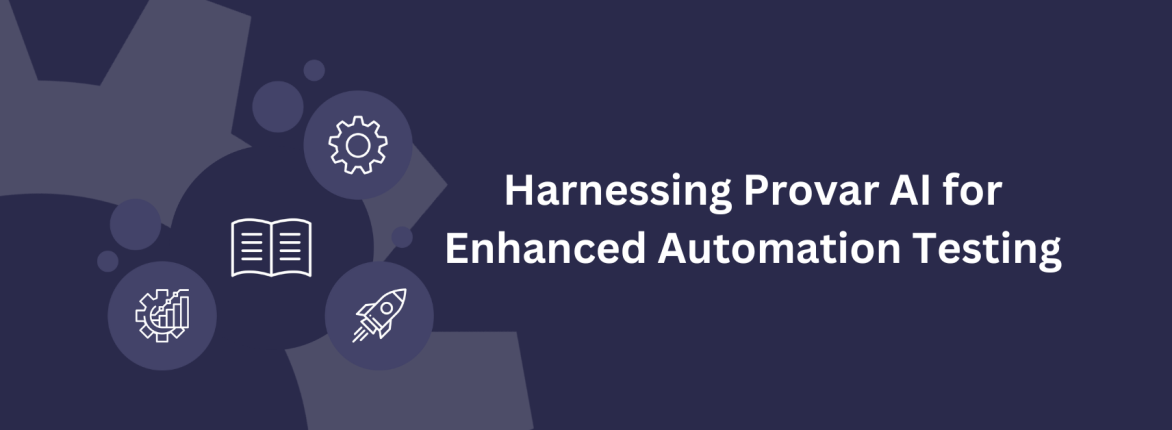If you’re reading this blog post, you likely are already testing your Salesforce platform or business in some capacity — and you’re probably familiar with the tedium and inefficiencies of manual testing.
While manual testing is a viable option for smaller systems or initial testing phases, it becomes less efficient as organizations scale. Automated testing offers a more effective approach to running tests accurately and increasing quality.
In this blog post, we’re discussing how to best navigate the shift from manual to automated testing smoothly, and how a powerful test automation solution like Provar Automation can help you get there with ease.
Manual Testing vs. Automated Testing
First, let’s define the difference between manual and automated testing. Manual testing involves human intervention at every step of the testing process. Testers manually go through the system, often using spreadsheets to track errors and perform validations. While manual testing can be ideal for smaller, less complex businesses, it can be time-consuming, less efficient for larger systems, and prone to human error.
On the other hand, automated testing uses software tools to build tests, automate the testing process, and optimize for the future. Automated testing is faster, more efficient, and less error-prone, making it the preferred choice for evolving, scaling businesses. Automated tests follow predefined scripts precisely, ensuring consistent and reliable results.
Benefits of Automated Testing for Evolving Businesses
There are many benefits of transitioning to an automated testing approach. Here’s some pros at a glance:
Speed and Efficiency
As businesses evolve and introduce new features and updates to their environment, the speed and efficiency of testing become critical. Automated testing allows for faster execution of tests compared to manual testing.
Reliability and Accuracy
Automated testing eliminates human error, ensuring more reliable and accurate results. This reliability is especially important when testing complex integrations and workflows within an ever-evolving ecosystem such as Salesforce.
Scalability
As businesses scale, the number of test cases increases exponentially, and managing them manually becomes impractical and time-consuming. Automated testing allows organizations to easily scale their test suite to accommodate an expanding environment.
Consistency
Automated tests are ideal for regression testing, allowing organizations to validate that previously identified issues have been resolved and are not reintroduced with new releases. This consistency in testing contributes to maintaining their overall quality and stability.
Cost-Effectiveness
While there may be an initial investment of time and resources, automated testing proves to be more cost-effective in the long run. The initial investment in automated testing pays off through increased productivity, accelerated testing cycles, and reduced long-term maintenance costs.
How to Start Moving from Manual to Automated Testing
Now, let’s get into the fun stuff! Here are a few ways you can begin moving from a manual testing strategy to an automated system.
Evaluate Your Testing Needs
Begin by evaluating your existing testing processes and identifying areas that can benefit from automation. Assess the frequency of testing, the complexity of test cases, and the level of repetition. Identify repetitive test cases that are time-consuming to execute manually or prone to human error. These are ideal candidates for automation. By focusing on high-value test cases, you can maximize the impact of automated testing on your quality assurance efforts.
Select a Test Automation Solution
Research and choose a test automation solution that best suits your team’s needs. Consider factors such as ease of use, training, scalability, future-proofness, security, level of support, and pricing. Evaluate each test automation solution based on parameters like test resilience, reusability, ease of use, and testing adjacent systems. Also, assess the vendor’s support, training, and customer success offerings.
Implement Your New Solution
After selecting your test automation solution, it’s time to implement it. Work closely with your vendor to ensure a strong foundation. Develop a comprehensive test strategy that outlines the scope, objectives, and approach of your automation efforts. Establish clear lines of communication and collaboration between all teams involved in the QA process. Create a training and skill development plan for team members to ensure they are comfortable with the solution and can apply automation best practices effectively.
Transfer Manual Tests to Automated Processes
Identify which tests you will target for automation. Design your tests for reusability across different orgs, languages, and user profiles to save time. Map your manual test cases to your automated ones to see the results and adjust for success. Decide on how you will report on your test execution results to your team, ensuring the report is free of jargon and easily understandable.
Evaluate and Adjust for Success
Regularly evaluate your automated testing efforts. Compare the number and severity of defects found by automated tests against those discovered through manual testing or user-reported issues. Assess the effort required to maintain and update your automated tests. Identify any areas where maintenance efforts can be reduced or streamlined. Establish a culture of continuous improvement to optimize the effectiveness and efficiency of your automated testing efforts.
How Provar Automation Can Help
Provar Automation offers a comprehensive solution tailored for Salesforce environments, and it is the perfect tool to use if you’re beginning the transition from manual to automated testing. Using the information found within Salesforce’s metadata, it helps to build tests that are resilient in the face of change and that are easy to create, regardless of a tester’s coding background. It provides a centralized environment for managing and executing tests, ensuring seamless collaboration across an entire organization.
Provar Automation’s user-friendly interface and proven customer support and customer success offerings make it easy for teams to implement strong, future-proofed test automation practices. It includes robust reporting and analytics features that provide valuable insights, helping teams make data-driven decisions. Since 2014, it has been an industry leader for those looking to make the leap into automation.
Connect with a Provar team member to learn more!
Want guidance on where to start in your automated testing journey, in Salesforce and beyond? Connect with a Provar expert today!










